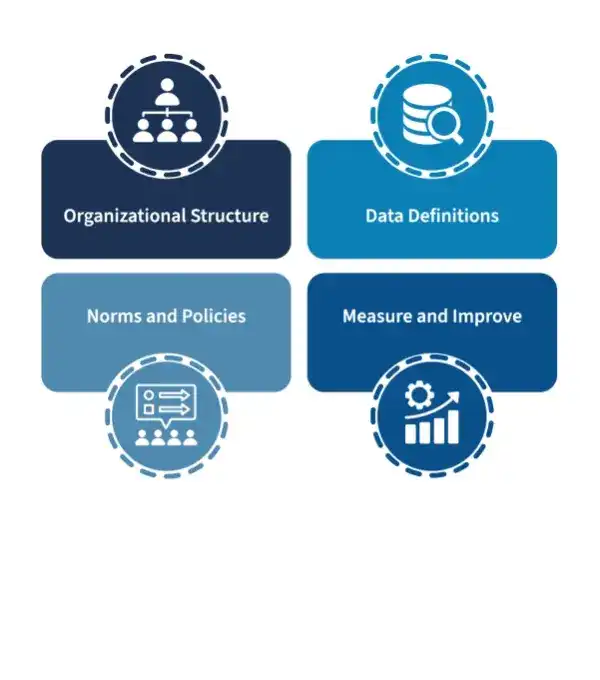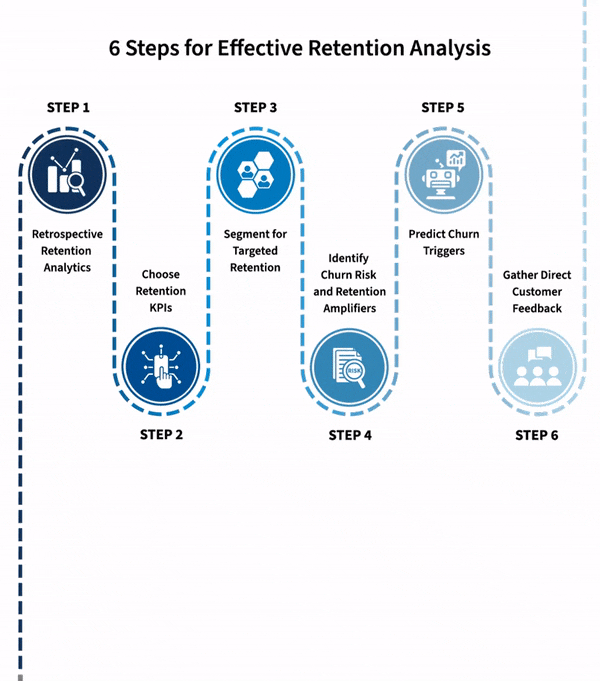
 Maximilian Filtenborg
Maximilian Filtenborg

In the data-driven world, companies have valuable information at their disposal. Data sharing is a powerful strategy, and sharing data with customers drives traction.
Data sharing can be a strategic advantage for B2B SaaS companies, offering numerous benefits that contribute to increased customer engagement, enhanced product value, and a more competitive market position. Here are the key reasons why companies should seriously consider data sharing:
In summary, data sharing is a strategic move for B2B SaaS companies that want to deepen customer engagement, strengthen product value, and gain a competitive edge in the market. Companies can foster long-lasting relationships and drive sustainable business growth by empowering customers with data-driven insights.

We identify three levels in the data-sharing process, each with its own pros and cons.
1. Raw Data Sharing for Valuable Insights
2. Insights as a Service: Empowering Decision-Making
3. Analytics Enabled PaaS: Enhancing Customization
There are several ways to approach data sharing in practice, below we go into the best approaches to sharing data with customers.
A compelling and straightforward approach to empowering B2B customers with data is directly sharing the raw information. This empowers them to integrate it into their existing reporting and analysis systems seamlessly. This is a significant benefit, as most businesses already have their reporting in place and would prefer to integrate this data source instead of creating another tool that they need to look at.
In today’s landscape, leveraging cloud-based storage solutions or offering accessible APIs stands as the optimal way to facilitate direct data sharing. Cloud storage, known for its robustness and cost-effectiveness, offers an attractive avenue.
Commonly, Amazon S3, or cloud storage buckets serve as the foundation for this approach.
An alternative to explore is AWS Data Exchange, a comprehensive solution by AWS. It handles intricate aspects, such as streamlined monthly billing based on data exchange usage.
In sharing raw data, a judicious assessment of the implications is essential. It’s worth recognizing the substantial value in your data, underscoring the importance of discerning distribution strategies that resonate with its inherent worth.
In data sharing, Amazon Web Services (AWS) introduced a sophisticated solution known as AWS Data Exchange. This innovative service provides two distinct avenues for seamless data exchange: AWS Data Exchange for Redshift and AWS Data Exchange for S3.
AWS Data Exchange, a creation of Amazon, empowers users to publish and potentially monetize their datasets. For those utilizing Amazon Redshift, the process entails setting up AWS Data Exchange specifically for Amazon Redshift, as detailed in the AWS Data Exchange for Amazon Redshift resource.
The procedure for publishing a Redshift dataset follows these logical steps:
For more comprehensive guidance, refer to the detailed documentation provided here.
AWS Data Exchange boasts a range of valuable advantages:
Nonetheless, there are some considerations to take into account:
Becoming a provider of AWS Data Exchange necessitates adhering to specific requirements:
Furthermore, if the intent is to offer products for sale, further details and a US bank account are required.
The cost structure for AWS Data Exchange involves distinct aspects for providers and subscribers:
Providers (You Pay):
Application of the aforementioned provider costs may vary, as detailed here.
Subscribers (Customers Pay):
A comprehensive breakdown of associated costs is available for review here.
Similar options are available for AWS S3, which you can find here.
Among the options available to cater to customers, this particularly stands out for its exceptional value. In short:
Once you’ve made the choice that you want to offer insights as a service, there are a number of delivery options available to you. Instead of developing analytics in-house, you should consider employing one of the options the many BI tools offer you. Prominent ones like Tableau, Power BI and others all have one, if not multiple ways to share reports and dashboards with customers.
One challenge is how to share your dashboards and reports with customers. Many businesses take the route of least resistance, but lose out on many of the benefits a full-fledged solution could offer. Should we classify the avenues for sharing reports and dashboards with customers, there are several options available. Ranging from very simple to complex:
Data sharing offers numerous advantages, but also challenges that require careful consideration and proactive measures to ensure successful implementation. The key challenges include:
Data security is a critical concern when sharing information with external parties. While tools like BI dashboards with shareable links may offer a quick and convenient solution, they can also pose significant security risks. Unauthorized access to sensitive data through these links could lead to data breaches and compromise confidentiality. Businesses must adopt robust security protocols, such as encryption, access control, and regular monitoring to safeguard against potential threats.
Sharing data often involves utilizing cloud storage solutions like AWS S3 Buckets. While cloud-based services offer scalability and accessibility advantages, businesses must protect these buckets from unauthorized access. Additionally, organizations need to manage the costs associated with cloud storage, as (high-volume) data transfers out from the cloud can be expensive. Careful planning and cost optimization strategies are essential to ensure efficient use of cloud resources.
When sharing data with customers, ensuring data quality is of utmost importance. Customers need accurate and reliable data to make informed decisions and gain valuable insights. Poor data quality can lead to erroneous conclusions and undermine the company’s and its clients' trust. Structured data validation and cleansing processes are crucial to maintain high data quality and provide a positive customer experience.
Addressing these challenges requires a holistic approach to data sharing. Businesses must prioritize data security through robust encryption and access control. Implementing secure data transfer protocols and monitoring data access can help mitigate security risks effectively.
Managing cloud storage involves implementing proper access control, monitoring usage, and optimizing costs to ensure efficient resource utilization.
To enhance data quality, companies should establish rigorous data governance practices, including data validation and cleansing, to provide accurate and reliable information to their customers.
By addressing these challenges proactively, B2B companies can capitalize on the benefits of data sharing, while ensuring the privacy, security, and quality of shared information, fostering stronger customer relationships and driving business growth.
In the landscape of data-driven business, the concept of data sharing has emerged as an important strategy, offering many advantages beyond mere revenue generation. This practice holds the potential to forge robust relationships with customers, amplify product value, and set a company apart in a competitive market. However, successful data sharing demands careful consideration and strategic decision-making.
Recognizing the high value inherent in data sharing, B2B SaaS companies are presented with a transformative opportunity. The potential to elevate customer engagement, reinforce product utility, and achieve market differentiation is undeniable. Yet, this path is not without complexity. Choosing the optimal data-sharing solution demands a thoughtful approach that transcends the path of least resistance.
It is paramount to address the challenges that lie ahead. Security and the quality of shared data must be paramount considerations, safeguarding sensitive information while ensuring its integrity.
In summary, data sharing with customers is a transformative feature for B2B SaaS companies, promising enhanced engagement, improved product offerings, and competitive distinction. By thoughtfully selecting the path that aligns with their objectives and navigating the challenges with a resolute mindset, companies can unlock the potential of data sharing, nurturing partnerships, and improving their growth.

Maximilian is a machine learning enthusiast, experienced data engineer, and co-founder of BiteStreams. In his free-time he listens to electronic music and is into photography.
Read moreEnjoyed reading this post? Check out our other articles.

 Maximilian Filtenborg
Maximilian Filtenborg

 Maximilian Filtenborg
Maximilian Filtenborg

 Maximilian Filtenborg
Maximilian Filtenborg